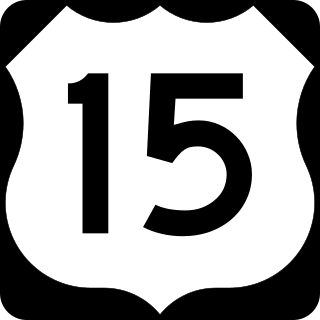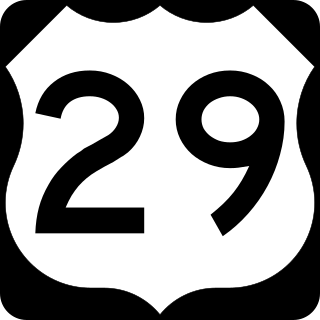Wingina is an unincorporated community in Nelson County, Virginia, United States.
Contents

Wingina is an unincorporated community in Nelson County, Virginia, United States.

This area was originally inhabited by Monacan Indians. The Monacan tribe and their allies, the Mannahoac, had settled central Virginia from the Rappahannock River to the James River for at least 500 years before the English arrived in Virginia. As the English encroached farther west into what is now central Virginia, the Indians dispersed to the north, south, and west. In the 19th century a number of Monacans created a settlement at Bear Mountain in Amherst County, where many of the tribe live today. The Saponi and Tutelo Indians are also remnants of this main confederacy. This village located on the banks of the James River between Buckingham and Nelson counties was part of the original land grant of Dr. William Cabell in 1735. Dr. Cabell received the grant of 25,000 acres from King George II. The Europeans first called this area "Hardwicksville".
The small town of Wingina is located south of Lovingston, situated on James River Road (SR 56) at the James River Bridge and the C&O railroad (known as Wingina Station), where the Wingina Post office and general store now stands. On the western side of Rte. 56 are the areas known as Union Hill and Norwood. On the eastern side of this road are the areas known as Midway Mills, Warminster, and Edgewood. This entire area was owned by the Cabell family.
About five miles above this area on this same road, heading towards the town of Shipman, is Glade Rd., also known as Secretary's Rd. and "Warriors Path". This road was used by the Monacan and Powhatan Confederations for hunting and war between the local tribes, consisting of Siouan-speaking (Monacan and Mannahoac) and Iroquoian-speaking groups (Cherokee). Beginning as a dirt path through the wilderness, the road was formed by the natives walking in single file. Their feet were set down from heel to toe, the advancing foot always on the line with their rear foot. The years of single file journeys had worn a deep narrow trail, crossing streams where fords were established. This trail stretched from the Rockfish River, down through Findlay's Gap into Amherst. As the area began to grow with early white settlers, this main Indian trail was widened and maintained by the local African slaves to accommodate horses and oxen, then to provide access to stagecoaches and wagons.
In 1853, the canal company owned by Joseph Carrington Cabell built a covered wooden bridge over the James River at Wingina, which was used during the American Civil War. The bridge was eventually burned by the Confederate army to prevent General Sheridan's army from crossing in their effort to cut off General Lee's retreat to Petersburg.
In 1880, the Richmond Allegheny Railroad purchased the property around the canal and named this area "Wingina" after a Secotan Indian chief of the 16th century who resisted the encroachment of the Europeans.
In 1890, the Chesapeake and Ohio Railway (C&O) acquired the property, and in 1905 the company constructed a steel-trussed bridge over the James River on the original stone piers of the earlier wooden bridge.
In 1920, the Johnson family, who owned a building supply store, moved from Buckingham County over to Wingina and established the Wingina General Store and Post Office. The store supplied the railroad ties for the C&O railroad. John Yarborough served as the first postmaster. The general store closed in 1991 but the post office still services areas of Buckingham, Norwood and Wingina. [1]
Edgewood and Soldier's Joy are listed on the National Register of Historic Places. [2]
Edgewood may refer to:

Powhatan County is a county located in the Commonwealth of Virginia. As of the 2020 census, the population was 30,033. Its county seat is Powhatan.

Nelson County is a county located in the Commonwealth of Virginia, in the United States. As of the 2020 census, the population was 14,775. Its county seat is Lovingston. Nelson County is part of the Charlottesville, VA, Metropolitan Statistical Area.

Fluvanna County is a county located in the Piedmont region of the Commonwealth of Virginia, United States. As of the 2020 census, the population was 27,249. Its county seat is Palmyra, while the most populous community is the census designated place of Lake Monticello.

Amherst County is a county, located in the Piedmont region and near the center of the Commonwealth of Virginia in the United States. The county is part of the Lynchburg Metropolitan Statistical Area, and its county seat is also named Amherst.

Amherst is a town in Amherst County, Virginia, United States. The population was 2,231 at the 2010 census. It is the county seat of Amherst County.
William Cabell was an American planter, soldier, and politician who served more than four decades in both houses of the Virginia General Assembly representing the area of his and family members' plantations on the upper James River.
Samuel Jordan Cabell was an American Revolutionary War officer, planter and Virginia politician who served in the Virginia House of Delegates and at the Virginia Ratification Convention of 1788 as an Anti-Federalist and in the United States House of Representatives aligned with the Democratic-Republican.
The Monacan Indian Nation is one of eleven Native American tribes recognized since the late 20th century by the U.S. Commonwealth of Virginia. In January 2018, the United States Congress passed an act to provide federal recognition as tribes to the Monacan and five other tribes in Virginia. They had earlier been so disrupted by land loss, warfare, intermarriage, and discrimination that the main society believed they no longer were "Indians". However, the Monacans reorganized and asserted their culture.

William H. Cabell was a Virginia lawyer, politician, plantation owner, and judge aligned with the Democratic-Republican party. He served as a Member of the Virginia House of Delegates, as Governor of Virginia, and as a judge on what later became the Virginia Supreme Court. Cabell adopted his middle initial in 1795—which did not stand for a name—to distinguish himself from other William Cabells, including his uncle, William Cabell Sr.

James Garland was a 19th Century politician, military officer, planter, lawyer and judge from Virginia. From 1835 to 1841, he served three terms in the U.S. House of Representatives. He had previously served in the War of 1812.

U.S. Route 15 (US 15) is a part of the United States Numbered Highway System that runs from Walterboro, South Carolina, to Painted Post, New York. In Virginia, the U.S. Highway runs 230.37 miles (370.74 km) from the North Carolina state line near Clarksville north to the Maryland state line at the Potomac River near Lucketts. US 15 is a major north–south highway through the Piedmont of Virginia, connecting Clarksville and Farmville in Southside with Culpeper, Warrenton, and Leesburg in Northern Virginia.
Alexander Brown was a Confederate soldier and American merchant, best known as the author of several books on the early history of Virginia.

U.S. Route 29 (US 29) is a major north–south route in the commonwealth of Virginia. It covers 248.0 miles (399.1 km) from the North Carolina border at the city of Danville to the Key Bridge in Washington DC. US 29 roughly bisects Virginia into eastern and western halves and, along with Interstate 81 (I-81) and US 11 in western Virginia and I-85/I-95 as well as US 1 farther east, provides one of the major north–south routes through the commonwealth.

State Route 56 is a primary state highway in the U.S. state of Virginia. The state highway runs 60.87 miles (97.96 km) from U.S. Route 11 at Steeles Tavern east to US 60 near Buckingham. SR 56 is the main east–west highway of Nelson County. The state highway connects the county seat of Lovingston with Buckingham to the east and the Blue Ridge Mountains and the Shenandoah Valley to the west.

U.S. Route 60 (US 60) in the Commonwealth of Virginia runs 303 miles (488 km) west to east through the central part of the state, generally close to and paralleling the Interstate 64 corridor, except for the crossing of the Blue Ridge Mountains, and in the South Hampton Roads area.
New Canton is an unincorporated area in northeastern Buckingham County, Virginia, United States. It lies along U.S. Route 15 below the James River, northeast of the county seat of Buckingham. It has a post office with the ZIP code 23123.

Colleen is an unincorporated community in Nelson County, Virginia, United States. It was originally named Cabellsville. From 1761, Colleen was the first seat of government of the original Amherst County, when the county court first met at Henry Key's home near this central location in the newly-formed county and ordered William Cabell to survey the line dividing it from the former Albemarle County. The new courthouse was erected on Lunsford Lomax's land by March 1762. In 1807, Virginia's legislature formed Nelson County, so the county seat had to be relocated. The Amherst County judges met at New Glasgow and ordered a new courthouse built nearby. That frame courthouse was finished in 1810 and replaced by the current courthouse in 1870. Meanwhile, the Nelson County seat was transferred to Lovingston, and a courthouse built in 1809.
Midway Mills is an unincorporated community in Nelson County, Virginia, United States. Originally called Midway, the settlement was established on June 6, 1774, by Dr. William Cabell,, and was the first European settlement in Nelson County. It was named Midway because it was midway between Richmond and Lynchburg along the James River. The area, at that time part of "Old Albemarle County", was later divided into the counties of Albemarle, Amherst, Buckingham, Nelson, and Fluvanna between 1741 and 1809.

The Tye River is a 35.4-mile-long (57.0 km) tributary of the James River in central Virginia in the United States. Originating on the eastern slope of the Blue Ridge Mountains in Nelson County, and fed by the Piney and Buffalo rivers, by way of the James River it is part of the watershed of the Chesapeake Bay.